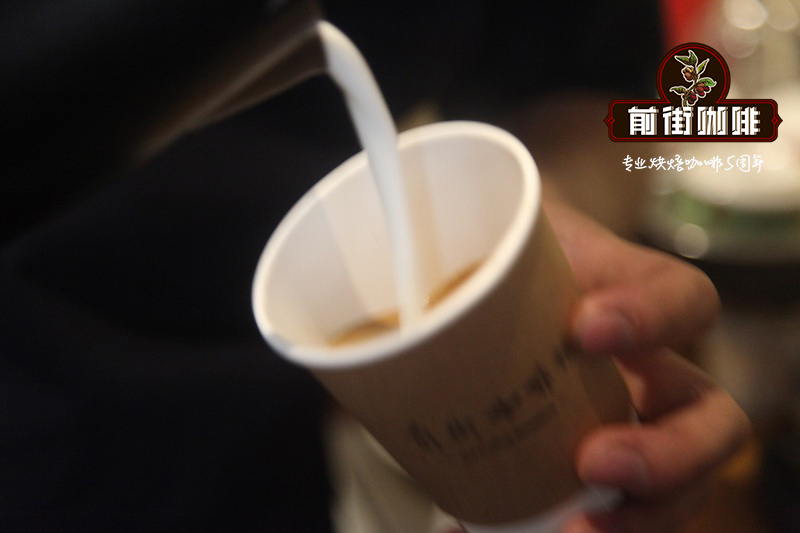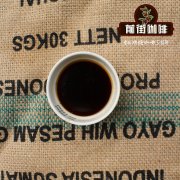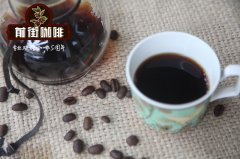Introduction to the cultivation of Coffee in the Manor of the Saka River in Nicaragua _ suggestion on the parameters of hand-made sun-dried yellow Kaduai

Professional coffee knowledge exchange more coffee bean information please follow the coffee workshop (Wechat official account cafe_style)
Rare imported Nicaraguan Coffee Saca River Manor Solar Yellow Kaduai Fine Black Coffee
National Nicaragua (Nicaragua)
Dipilto, Nueva Segovia in producing area
1300-1400 meters above sea level
Planting varieties Caturra, Typica, bourbon, red & yellow catuai and maragogype
Manor Saka River Manor (Agua Sarca Estate)
Producer Isaisio (Isacio Albir Vilchez)
Processing plant Beneficio Las Segovias
The annual rainfall is about 1000-1500 mm
Temperature 18-26oC
Harvest season December-March
The area is 70.42 hectares.
Washing and insolation by treatment
The Saca River Manor is located on the border between Nicaragua and Honduras, so the expansion of the estate has its limitations. At present, the varieties grown in the manor are red bourbon species (Red Bourbon), yellow bourbon species (Yellow Bourbon), red Cadura (Red Caturra), yellow Kadura (Yellow Caturra), elephant beans (Maragogype), Catuai and Pacamara. This is a beautiful place where you can find all kinds of beautiful animals and plants. The annual output of Saka River Manor is only 667 bags. Compared with Costa Rica's micro-processing plants, Nicaragua is more common than Nicaragua's larger ones, but not as large as those in Africa. The processing plant of Nicaragua will treat different farmers, varieties and batches in different ways. Therefore, in recent years, the diversity of Nicaragua coffee is quite rich, and the traceability is quite complete. Such processing plants are like: Don Esteban; of the Miersch family is almost monopolized by Taiwan's La Florencia Mill;, which owns rich varieties and farmers to deal with more than half of the 2010 CoE winners Beneficio Las Segovias, all appear in this bean list!
Sun treatment, no matter in terms of price or quality, is a rather polarized treatment. Regardless of the auction price, the price of tanned coffee in the producing area is only about 20% higher than that of washed coffee of the same quality, but the risk of sun treatment is much higher than that of washing treatment. So at the beginning, many buyers encouraged farmers or processing plants to produce tanned coffee, but if the acquisition was not guaranteed, it would put a lot of burden on the production side. In addition, in the early days, some people thought that sun-treated coffee would reduce the local characteristics of coffee, but in recent years, with the production of sun treatment in many areas, the diversity of treatment and local combination is probably far beyond traditional imagination. Washing presents style, sunlight magnifies the technology of the producer, and the quality of coffee fruit is the basis of everything.
Palate: strong aroma, slightly sweet and caramel in dry aroma; slightly black chocolate, licorice, oil and fruit (weak) in wet aroma, slightly sweet (sweet fruit or cinnamon sweet) smooth taste, good plumpness, moderate bitterness, weak acidity, not very strong aftertaste, but very long and full, and obvious aftertaste an hour after drinking. The whole belongs to a bean with mild and pure taste and balanced sour and bitter taste, which is very suitable for drinking black coffee.
Nicaraguan coffee beans, full-shaped, hard beans, taste is typical of American coffee, mild and pure, aroma overflowing, is also a rare Central American coffee without obvious acidity. The yield is low and the caffeine content is relatively low.
Nicaragua is located in central Central America, bordered by the Pacific Ocean to the west and the Caribbean Sea to the east. The highlands in the north and the coastal plains in the east are part of the Central American volcanic belt. The eastern plain is high-temperature and rainy, with a tropical maritime climate. The suitable climate provides an excellent growth environment for the cultivation of coffee.
High-quality Nicaraguan coffee, grown in the north and middle of the country. Coffee is a pillar industry in Nicaragua, producing nearly 100,000 tons of coffee beans every year. It is full-bodied, smooth and delicate, with a slightly bitter finish, like a faint taste in a wine.
Nicaragua is now one of the poorest countries in Central America. Due to its poor economic foundation, the coffee industry is still relatively backward, while coffee farmers are in extreme poverty. Fortunately, Nicaraguan coffee has received a number of foreign aid funds to improve the quality of its coffee. The coffee produced in Nicaragua's Madagelba, Sinodega and Segovia is highly respected by coffee lovers all over the world.
Analysis on the brewing of Yellow Kaduai Fine Black Coffee in the rare imported Manor of Saca River in Nicaragua
Recommended cooking methods: siphon, hand flushing
Degree of grinding: 3.5 (Fuji R440, Japan)
V60 filter cup, 15g powder, water temperature 91-92 degrees, grinding 3.5.The ratio of water to powder is close to 1:15
33 grams of water is steamed for 25s
Segment: water injection to 100ml cut off, slow water injection to 225ml
That is, 30-100-95
Other suggestions for trickling extraction:
Normal pressure, recommended grinding degree of 3.5-4 / water temperature 92 °C
Philharmonic pressure, recommended 2.5 grinding degree, water temperature 88 °C
Hand punch: 3.5 degree of grinding, water temperature 89 °C
END
Important Notice :
前街咖啡 FrontStreet Coffee has moved to new addredd:
FrontStreet Coffee Address: 315,Donghua East Road,GuangZhou
Tel:020 38364473
- Prev

Introduction of Nicaraguan Sunshine Jade Jade Coffee beans introduction to Nicaraguan Orange Fruit Manor
Professional coffee knowledge exchange more coffee bean information please follow the coffee workshop (Wechat official account cafe_style) tanning Fadan Jade Jade (Natural Caturra) 2014. 2nd (runner-up). C.o.E. Yusheng Manor: El Naranjo Dipilto. Orange Fruit Variety: Caturra. Danyu Jade producing area: Nueva Segovia (New Sagovia) City
- Next

Introduction of coffee varieties in Mamina Manor, Nicaragua. How can Pacamara grow coffee beans to taste good?
Professional coffee knowledge exchange more coffee bean information please follow the coffee workshop (Wechat official account cafe_style) Niagara Mamana Manor Pacamara species 19 sifted sun treatment method Nicaragua Mierisch Family Finca Mamamina Pacamara Natural flavor: you can feel the aroma of black berries, BlackBerry,
Related
- Detailed explanation of Jadeite planting Land in Panamanian Jadeite Manor introduction to the grading system of Jadeite competitive bidding, Red bid, Green bid and Rose Summer
- Story of Coffee planting in Brenka region of Costa Rica Stonehenge Manor anaerobic heavy honey treatment of flavor mouth
- What's on the barrel of Blue Mountain Coffee beans?
- Can American coffee also pull flowers? How to use hot American style to pull out a good-looking pattern?
- Can you make a cold extract with coffee beans? What is the right proportion for cold-extracted coffee formula?
- Indonesian PWN Gold Mandrine Coffee Origin Features Flavor How to Chong? Mandolin coffee is American.
- A brief introduction to the flavor characteristics of Brazilian yellow bourbon coffee beans
- What is the effect of different water quality on the flavor of cold-extracted coffee? What kind of water is best for brewing coffee?
- Why do you think of Rose Summer whenever you mention Panamanian coffee?
- Introduction to the characteristics of authentic blue mountain coffee bean producing areas? What is the CIB Coffee Authority in Jamaica?

